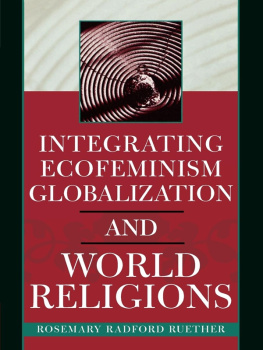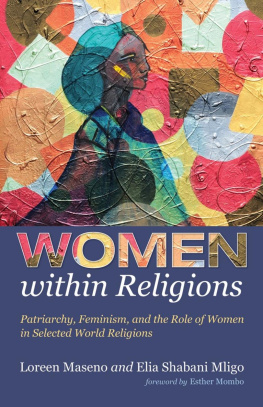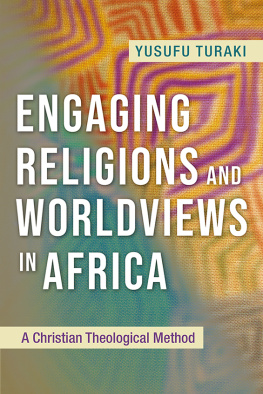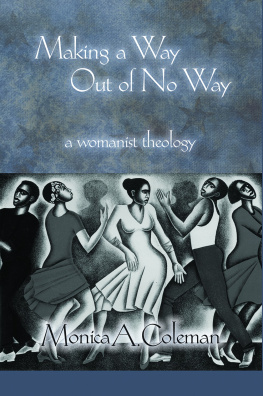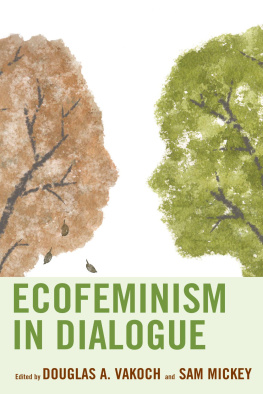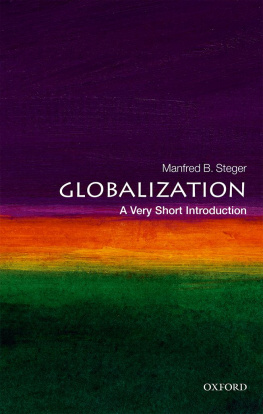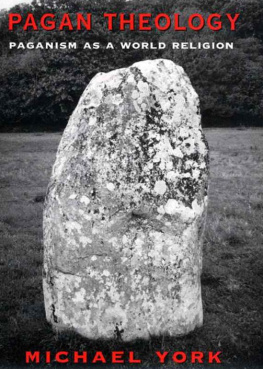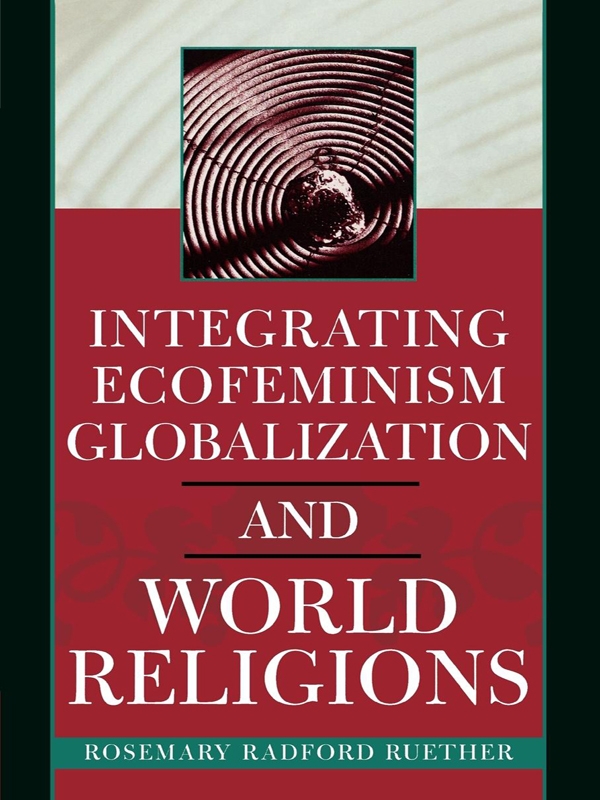Rosemary Radford Ruether received her M.A. in Roman history and Ph.D. in classics and patristics from the Claremont Graduate School in Claremont, California, in 1960 and 1965. She is the author or editor of thirty-eight books, mostly on feminist liberation theology, theological history, and social justice. She was the Georgia Harkness Professor of Applied Theology at the Garrett-Evangelical Theological Seminary and Northwestern University in Evanston, Illinois, from 19762000. She is presently the Carpenter Professor of Feminist Theology at the Graduate Theological Union in Berkeley, California. She is married with three children and two grandchildren.
CONCLUSION
I n chapter 2 of this volume on The Greening of World Religions we saw a variety of efforts to apply the ecological potential of different religions to care for the earth. The Jain tradition is one source of inspiration for the program on environmental ethics at Schumacher College in Devon, England. Buddhism is interpreted by engaged Buddhist thinker Sulak Sivaraska in Thailand as an ecological liberation worldview, inspiring campaigns against deforestation. Trees are ordained to confirm their sacredness and prevent them from being cut down. Buddhist ashrams and monastic communities in Thailand and also in the United States, in retreat centers such as Green Gulch Zen Center and Spirit Rock mediation center, are shaped to express an integrated ecological spirituality.
Jews also are applying Judaism to environmental spirituality and ethics. Arthur Waskow of the Shalom Center in Philadelphia has inspired a generation of American Jews to renew traditional observances, such as resting on the Sabbath and keeping kosher, applying them to contemporary issues of injustice, workaholic lifestyle, toxic farming, and exploitative farm labor. Islamic environmentalists seek to integrate care for the earth and the animals into Sharia, or Islamic law. The World Council of Churches has integrated integrity of creation into its mandates for peace and justice as one of the three guiding principles of its work.
Ecofeminist spirituality provides inspiration for direct action against corporate globalism and also for permaculture gardening for pagan priestess and psychotherapist Starhawk in Northern California. In Zimbabwe Christianity and Shona religious traditions are combined in earth-keeping churches that plant trees and care for watersheds. Wangari Maathai leads women in massive projects of tree planting and water conservation through a combined inspiration of Christianity and Kenyan indigenous religion. Vandana Shiva in India takes the Hindu religious theme of Shakti as key for resistance to Western developmentalism. Faith in Shakti also inspires the women of the antidam movement to resist dam building projects on the Narmada River. Aruna Gnanadason integrates Indian tradition and a Christian theology of grace to promote an ecofeminist theology as the base for her work in peace, justice and integrity of Creation at the World Council of Churches.
In Latin America the ecofeminist theology and spirituality of Ivone Gebara inspire communities of women all over the continent to apply this vision to their daily life. Programs, such as Capacitar , seek to overcome the mind-body split of traditional Christian culture. Techniques of body work help women to recover their bodies as the basis of their spiritual vitality, not an enemy of it, as in traditional ascetic spirituality. In the United States historian of science Carolyn Merchant constructs a partnership ethic to bring humans and nature together in joint decision making about sustainable environments. Although not identifying with any particular religious tradition, Merchant draws from the broad streams of Western culture to envision this partnership relationship between humans and nature in holistic interconnection.
How can this application of different world religions to ecological sustainability and resistance to exploitation be expanded? How can environmental work in different world religions be brought more into partnership with one another? One creative way to try to do that has been pioneered by the Interreligious Sustainability Project of Metropolitan Chicago. This project was put together by a partnership between the Center for Neighborhood Technology and several theological schools in Chicago area, especially the Lutheran School of Theology and Meadville-Lombard theological school of the Unitarian-Universalist tradition. Theologians and environmental activists together charted the environmental issues of the greater Chicago area. They produced a map showing the concentrations of population and environmental pollution and the relationship of these factors to health problems. A study guide was prepared which analyzed these interconnections and proposed various programs of actions.
This study guide then became the tool for a neighborhood-by-neighborhood organizing program. Organizers based at the Center for Neighborhood technology went to each neighborhood, locating the religious congregations across all traditions, Christian, Jewish, Buddhist, Muslim, Sikh, that might be willing to band together, study the program guide together in a joint adult education process, and then come up with projects of environmental care for their neighborhood. These projects might be anything from improving the waste disposal process to restoring green spaces in their neighborhood. Each neighborhood group engages in this study and develops their project as an expression of an interfaith religious vision and also comes to see themselves as members of a bioregional community of communities of the greater Chicago area.
The ancient religious forms of monastic life are also providing the basis for building new communities of ecojustice spirituality. We have seen examples of this in Buddhist ashrams and retreat centers in Thailand and the United States. Catholic religious communities, especially women religious, are also adapting monastic life to ecological spirituality and practice. One such group is Sisters of Earth, a network of Catholic womens religious orders seeking to live an ecological lifestyle as an expression of their faith and mission. Sisters of Earth was founded in 1993 by three Sisters of St. Joseph who put out a call to other religious women for an organizing gathering of those interested in earth spirituality. Fifty people came. Sisters of Earth was launched as a networking group with a yearly newsletter and a meeting every two years. The network now has several hundred members, including a small male group, Brothers of Earth.
Sisters and Brothers of Earth have been particularly inspired by the work of priest and ecologian Thomas Berry who pioneered a vision of ecological spirituality. Berry believes that the patterns of religious culture and daily life that have defined humanity since the agricultural revolution are in crisis. An ecological revolution is necessary to convert humanity into a new relationship with nature if the human species is to survive. Berry calls this the great work of our generation.
For practical advice on how to make an ecological transformation of their way of life, Sisters of Earth turned particularly to mentors such as Al Fritsch, founder of Science in the Public Interest in Appalachia. Fritschs Center does environmental sustainability inventories for institutions, including those of religious orders. From the mid-1980s Fritsch carried out more than sixty such inventories for motherhouses of religious orders in the United States. Since religious orders have roots in a preindustrial agricultural world and typically have land on which many produced their own food in an earlier generation, such motherhouses still include a considerable amount of land.

